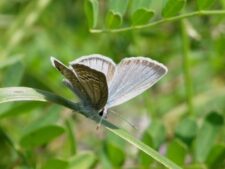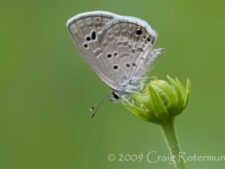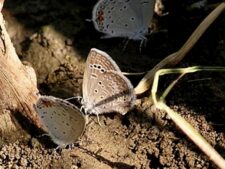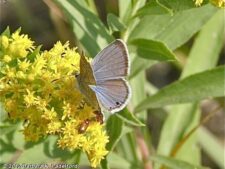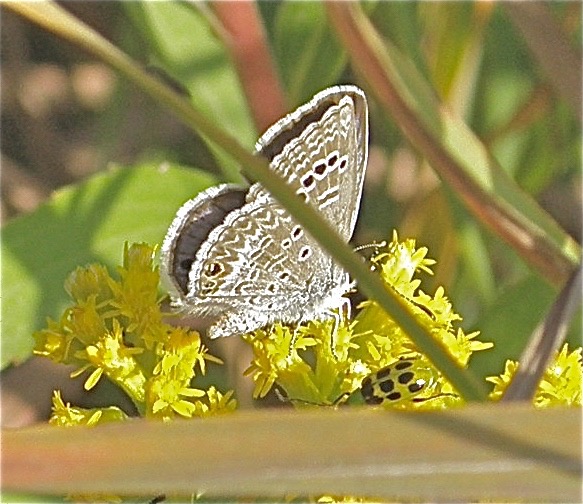
This diminutive butterfly has a wingspan of approximately 3/4 to 1 1/8 inches. Dorsally, the male is a lilac-blue with black sub-terminal bands, and the female is more dusky gray with blue basally. Ventrally, the forewing of both sexes is pale gray with 5 large, round black spots rimmed by white, the main identifying character for this species. The hindwings have many smaller dark gray spots rimmed with white. The caterpillar is .50 to .75 inch long and is slug-like in shape. The color is variable and can change according to the color of the plants it is eating. They usually have light colored chevrons down the back.
This butterfly is more common in some years than others. It is a southern emigrant that strays north to our area from mid-summer to early autumn. It is most often seen nectaring at clover flowers.
The scientific name was formerly Hemiargus isola. The larval foodplants are the flowers, buds and young leaves of many legumes, especially clover. Ants tend the caterpillars for a secretion they produce, much like the honeydew of aphids. This southern butterfly is unable to survive the winters in any stage this far north.
Disclaimer: The content of NatureSearch is provided by dedicated volunteer Naturalists of Fontenelle Forest who strive to provide the most accurate information available. Contributors of the images retain their copyrights. The point of contact for this page is: Babs Padelford.

